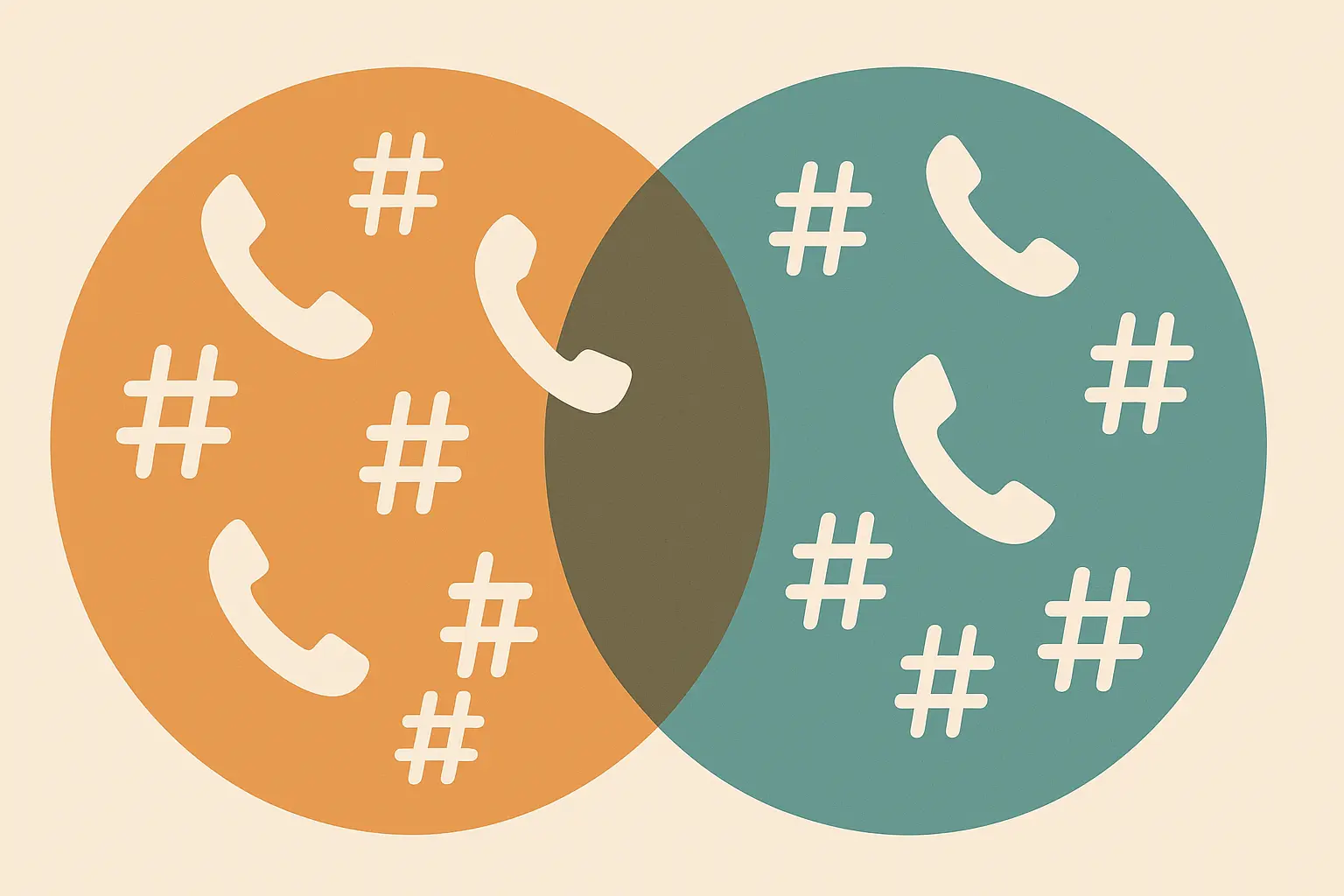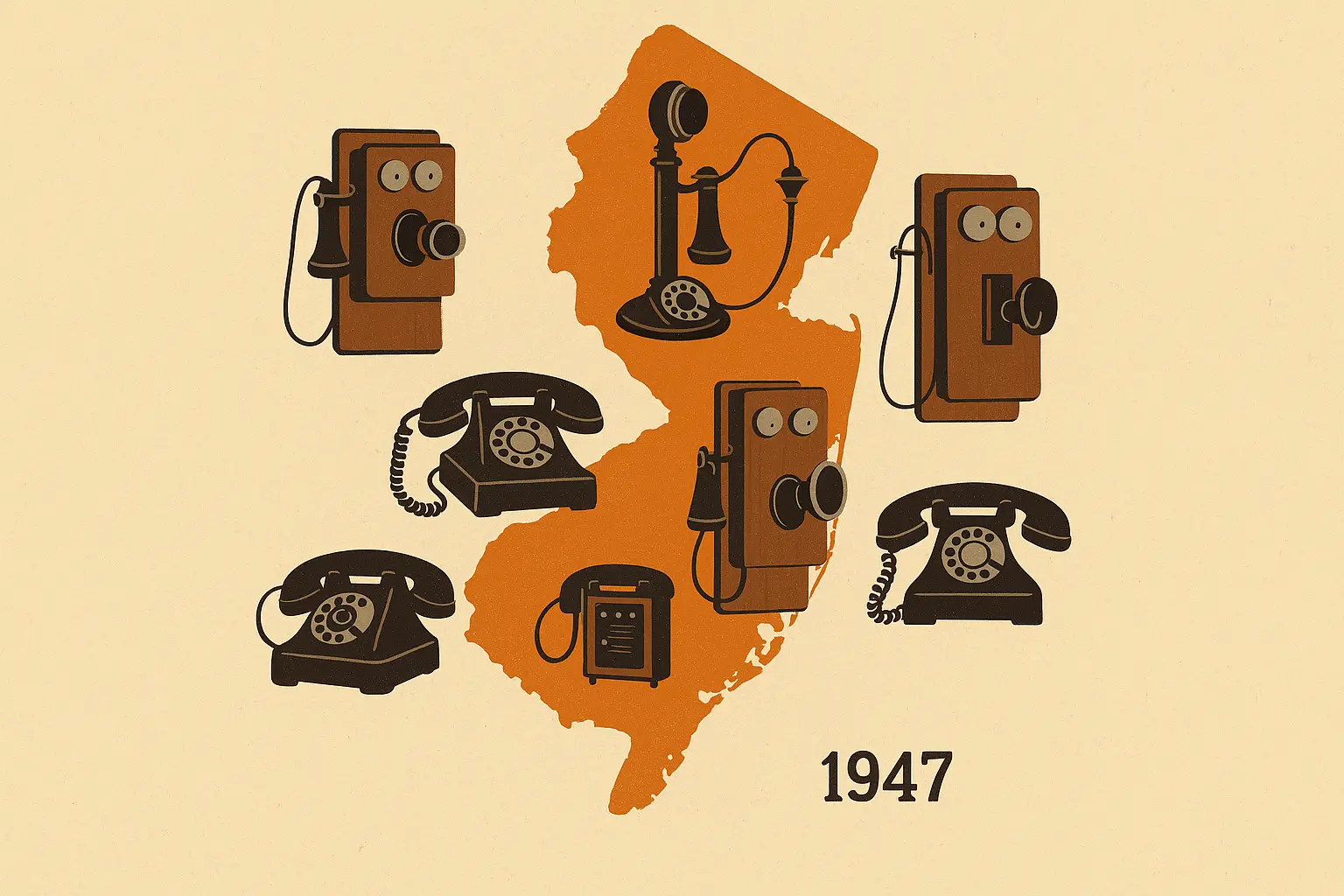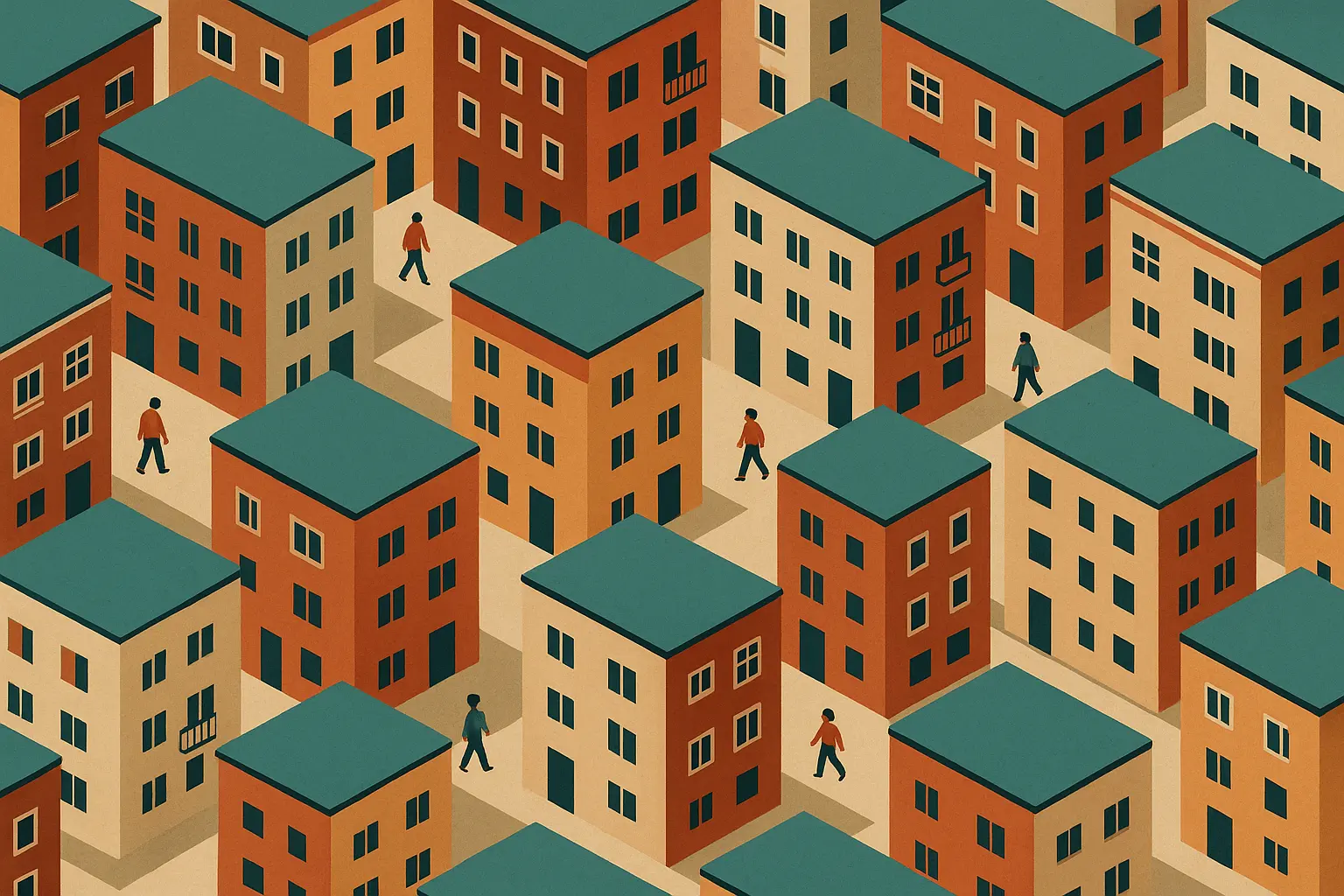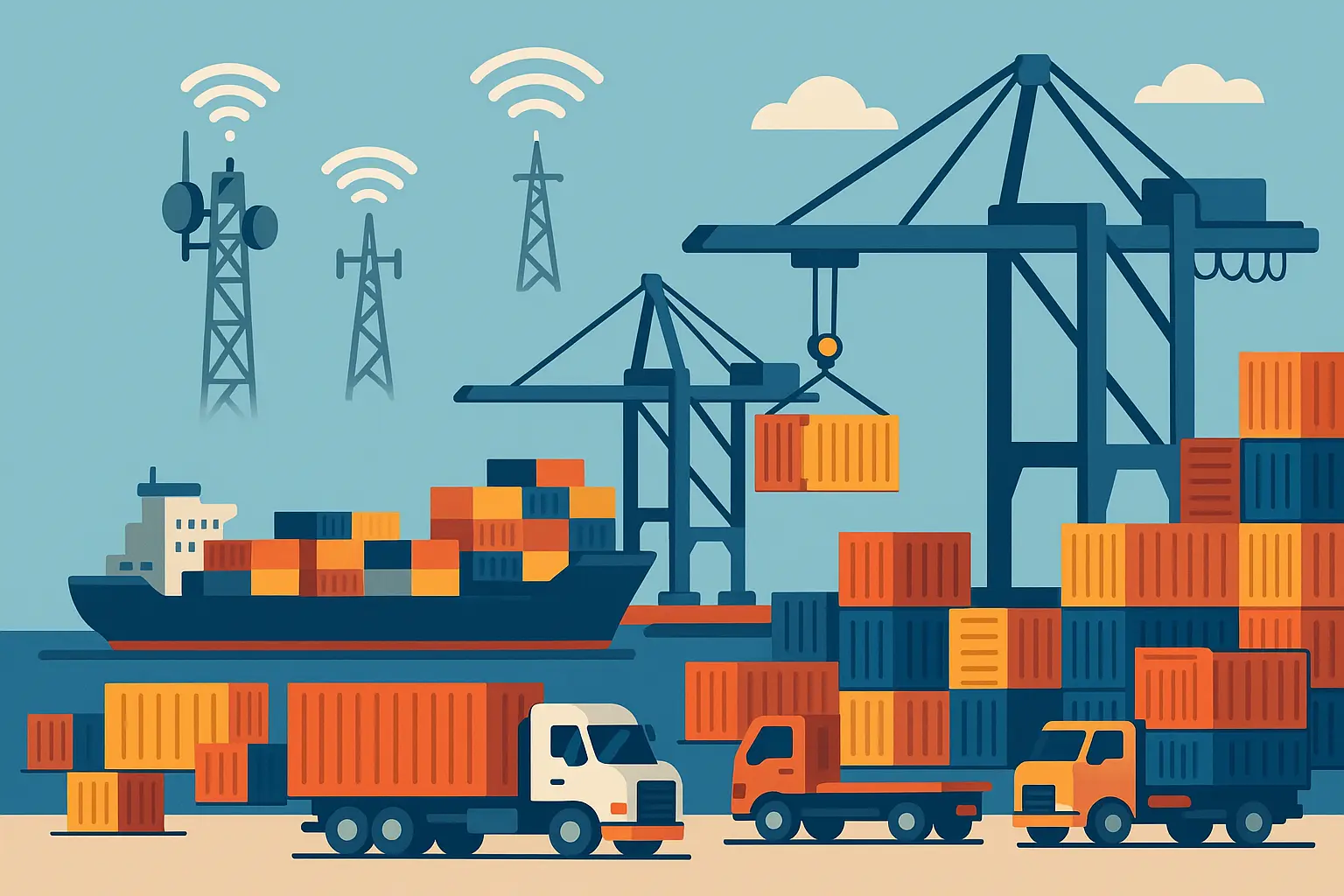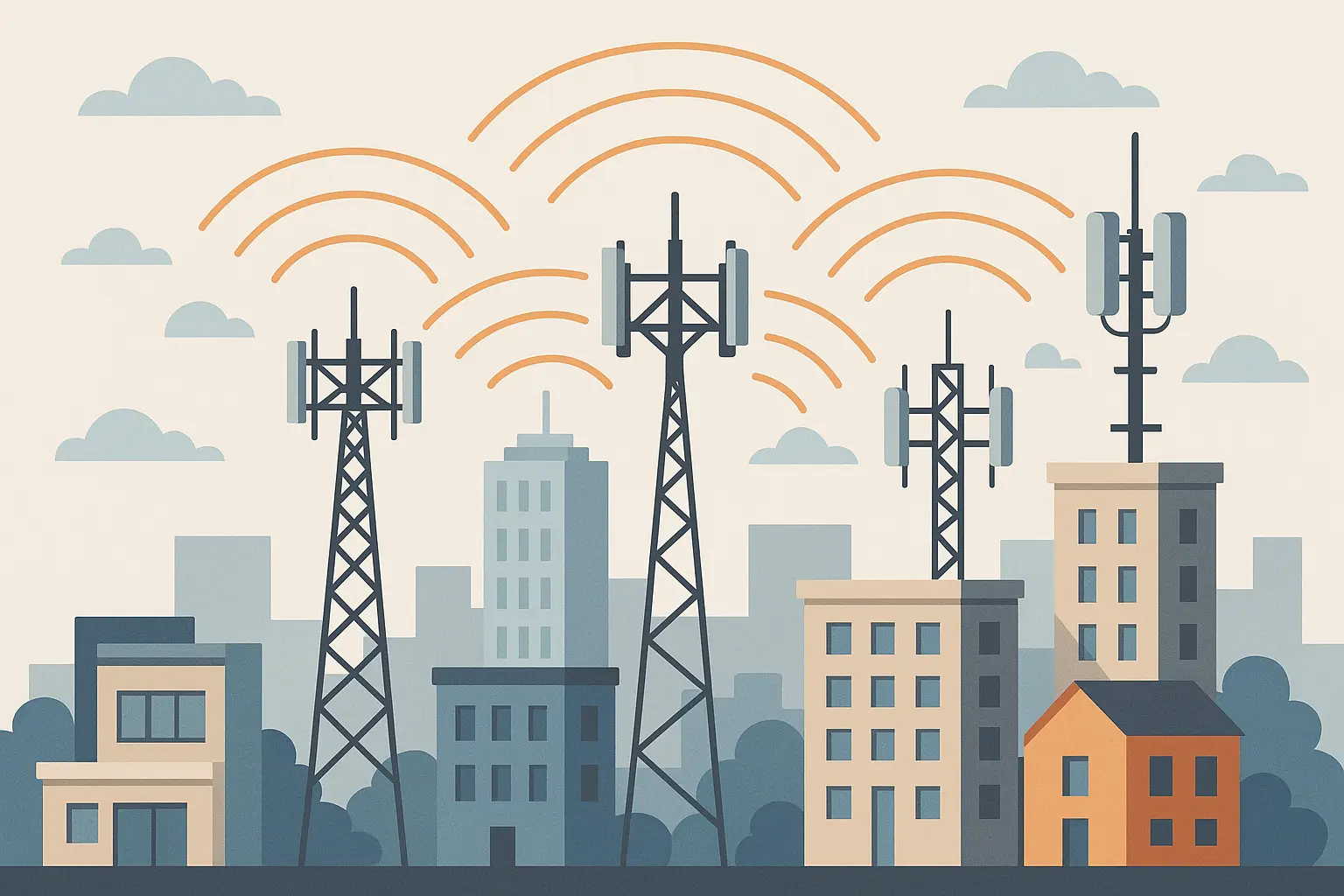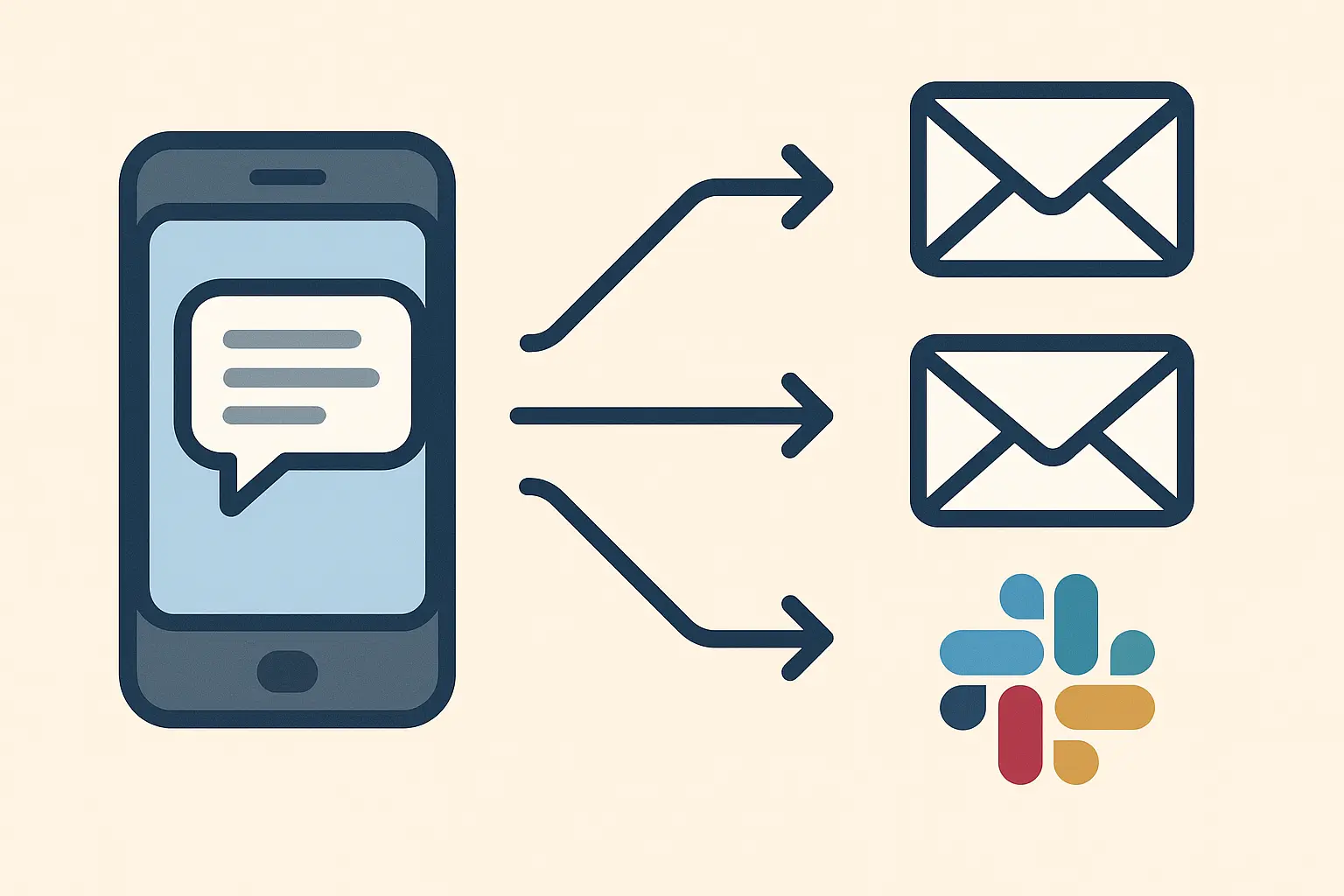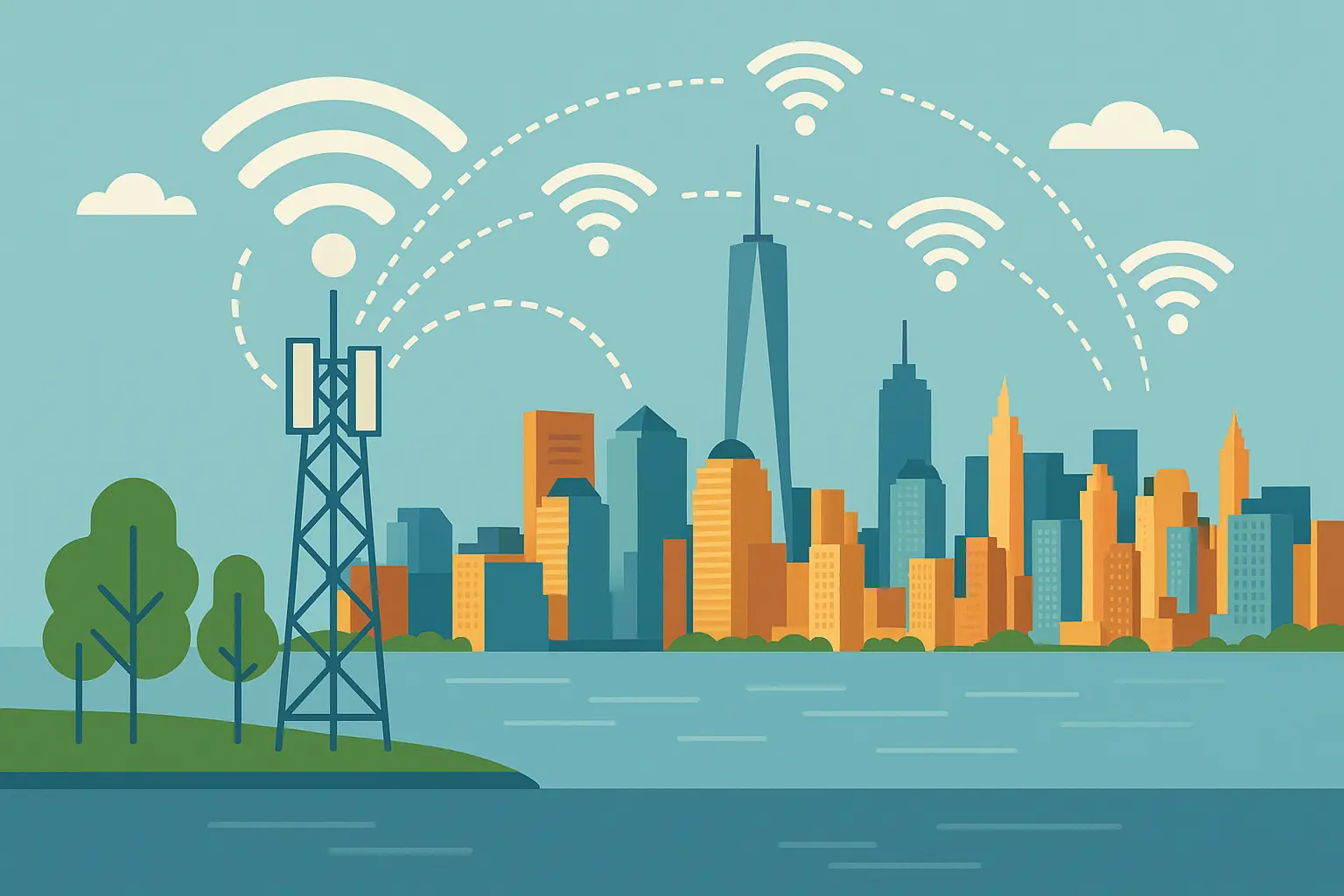So you’ve got a 201 number, or you’re thinking about moving to the area? You’re in for something pretty unique. This little corner of New Jersey—packed with over 1.3 million people according to ZipAtlas demographic data—sits right across from Manhattan and has stories to tell.
Let me walk you through what makes this area code special, from its wild history (it used to cover ALL of New Jersey!) to why your phone calls work differently here than almost anywhere else.
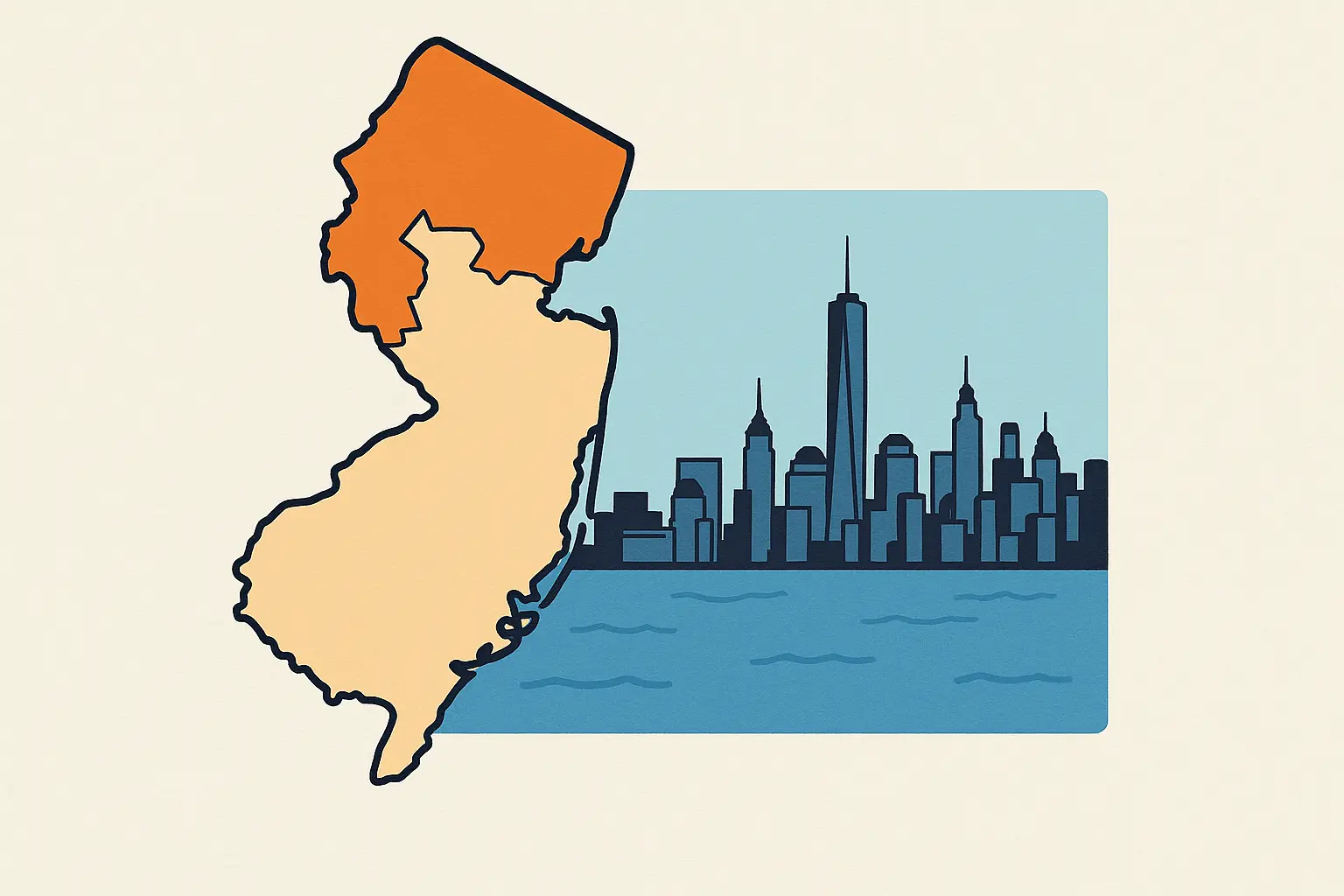
Table of Contents
Table of Contents
-
Where Exactly Are We Talking About?
-
The Great Area Code Evolution
-
Who Actually Lives Here?
-
Your Phone Actually Works Better Here (Mostly)
-
Why Your Business Communication Gets Complicated Here
-
What This All Means for You
TL;DR
-
The 201 area code covers Hudson County and parts of Bergen County in northeastern New Jersey, including major cities like Jersey City, Hoboken, and Bayonne
-
Originally covered all of New Jersey in 1947 but was split multiple times, with 551 now serving as an overlay code requiring 10-digit dialing
-
Serves one of America’s most densely populated regions with over 250,000 residents in Jersey City alone
-
Benefits from advanced telecommunications infrastructure due to proximity to Manhattan’s financial district
-
Business communication challenges in this high-density area create opportunities for SMS management solutions
Where Exactly Are We Talking About?
The 201 area code covers a surprisingly small but incredibly dense chunk of northeastern New Jersey. We’re talking Hudson County (the whole thing) plus parts of Bergen County.
Think Jersey City, Hoboken, Bayonne—places where you can literally see Manhattan from your window but still get that New Jersey attitude.
Where is area code 201 exactly? You’ll find 201 territory stretching across some of New Jersey’s most vibrant urban centers. The 201 coverage area includes major population centers that define the entire northeastern New Jersey experience.
The Cities That Matter
Jersey City is the heavyweight here with over 250,000 people crammed into a space that would make Manhattan jealous. Then you’ve got:
-
Hoboken – Yeah, that Hoboken. Frank Sinatra’s hometown, now overrun with young professionals paying NYC prices for slightly less space
-
Bayonne – Industrial, gritty, real. Still has that working-class backbone
-
Union City – One of the most densely populated places in America (seriously, look it up)
-
West New York – Confusing name, great views
-
Secaucus – Where you go shopping and wonder why everything’s built on a swamp
|
City |
Population Type |
Key Characteristics |
|---|---|---|
|
Jersey City |
Major Urban Center |
Financial district spillover, high-rise development |
|
Hoboken |
Dense Residential |
Historic charm, young professional population |
|
Bayonne |
Industrial/Residential |
Port facilities, mixed-use development |
|
Union City |
High-Density Residential |
Diverse immigrant communities |
|
West New York |
Residential |
Cliff-top location, Manhattan views |
|
Secaucus |
Commercial Hub |
Shopping centers, transportation nexus |
These 201 cities create a unique telecommunications environment where business and residential needs intersect constantly. The 201 region’s diversity means communication infrastructure must handle everything from high-frequency trading to family conversations.
The Weird Boundary Situation
Here’s where it gets interesting: the Hudson River is your eastern border, which means Manhattan is literally a tunnel ride away. This proximity isn’t just convenient—it shapes everything about how this area works, from the economy to why your rent is so high.
Consider a business owner in Secaucus who needs to coordinate with suppliers in Manhattan and clients in Bergen County. The 201 area code creates an immediate sense of local connection with Manhattan-based partners, while the geographic boundaries mean most business relationships exist within a 20-mile radius, enabling face-to-face meetings and local networking opportunities.
The 551 Overlay Reality Check
Here’s where things get annoying. In 2001, they introduced 551 as an “overlay” code. Same exact area, but now you might get either 201 or 551 when you get a new number.
The result? Everyone has to dial 10 digits for EVERY call, even to your next-door neighbor. Yes, it’s as annoying as it sounds.
The 551 overlay affects every single phone call you make within the region. Whether you’re calling someone with a 201 number or a 551 number, the dialing process remains the same. This 551 system was implemented to address the growing demand for phone numbers in this economically vibrant area.
What 10-Digit Dialing Means for You
Forget the days of dialing just seven digits for local calls. Whether you’re calling your neighbor or the pizza place down the street, you’ll need to include the area code every single time. For businesses managing multiple communication channels, understanding how to forward text messages to an email address becomes crucial when dealing with increased message volume from 10-digit dialing requirements.
10-Digit Dialing Checklist:
-
☐ Update all stored contacts to include area codes
-
☐ Reprogram speed dial numbers with full 10 digits
-
☐ Update business cards and marketing materials
-
☐ Inform customers about the dialing requirement
-
☐ Test all automated systems for 10-digit compatibility
Understanding proper phone number formatting is essential for businesses operating in the 201 area code region, especially when configuring automated systems that require understanding the US phone number format with country code for international business communications.
The Great Area Code Evolution (Or: How 201 Went From Hero to Zero… to Hero Again)
Back in 1947, if you had a phone number in New Jersey, it started with 201. The ENTIRE state. Can you imagine?
As 943 The Point explains, “New Jersey received the first area code in the original numbering sequence of 86 unique codes” because “at that time, in 1947, it was the most densely populated place, buzzing with phone calls left and right.”
When 201 Ruled Everything
Picture this: from Cape May to the George Washington Bridge, every single phone number was 201. The whole Garden State shared three digits. It was simpler times—fewer phones, fewer people, and definitely fewer pizza places to call.
The original 201 coverage was massive by today’s standards. Every business, every household, every payphone in New Jersey carried those three digits. The 201 designation represented the entire Garden State’s telecommunications identity. Back then, having a 201 number meant you were part of New Jersey’s growing post-war economy.
The Slow Shrinkage
As New Jersey grew (and boy, did it grow), 201 got chopped up:
-
1956: Southern Jersey became 609, leaving 201 to serve northern and central portions of the state
-
1997: Northwestern areas became 973, further concentrating 201’s coverage in the northeastern corner
-
And then came the real kicker…
According to Cat Country 107.3, “Area code 201 was also the code that used the country’s first Direct Distance Dialing, which means you were able to place a call without using an operator.”
Through these historical splits, 201 evolved from covering an entire state to serving a highly concentrated urban region. The current boundaries represent decades of telecommunications planning and population growth patterns that continue to influence the area today.
A family business that started in Newark in 1950 with a 201 number would have experienced three different area code changes: keeping 201 when Newark split off, potentially switching to 973 in 1997, and now dealing with 10-digit dialing requirements. This evolution mirrors the telecommunications challenges many established businesses face in adapting to regional growth.
Who Actually Lives Here?
The demographics tell a fascinating story. The median household income sits at $121,397 according to ZipAtlas demographic data—not bad for an area where you can commute to Wall Street in 20 minutes.
Density Like You Wouldn’t Believe
We’re talking about population density that rivals some of the most crowded places on Earth. In Jersey City alone, you’ve got over 17,000 people per square mile. That’s a lot of phones, a lot of calls, and a lot of reasons why the area code ran out of numbers.
The 201 area code serves over 1.3 million residents packed into a relatively small geographic area. This concentration creates unique challenges for telecommunications infrastructure and generates massive communication traffic.
The Manhattan Effect
Being this close to the financial capital of the world changes everything. You’ve got:
-
Financial services companies spilling over from Wall Street
-
Tech companies that want NYC access without NYC rent
-
A workforce that’s 67.6% employed according to ZipAtlas labor statistics (higher than most places)
-
People who think nothing of hopping on PATH train for dinner in the Village
|
Economic Sector |
Communication Demands |
Infrastructure Needs |
|---|---|---|
|
Financial Services |
High-volume trading, secure communications |
Redundant fiber networks, low-latency connections |
|
Transportation/Logistics |
Real-time tracking, dispatch systems |
Mobile coverage, GPS integration |
|
Healthcare |
Patient communications, emergency systems |
HIPAA-compliant messaging, reliable connectivity |
|
Education |
Student communications, administrative systems |
High-capacity networks, multi-device support |
|
Manufacturing |
Supply chain coordination, safety systems |
Industrial-grade wireless, backup communications |
The high labor force participation rate in the 201 area code region creates substantial business communication needs. This economic activity generates the demand that makes advanced telecommunications infrastructure profitable and necessary.
Your Phone Actually Works Better Here (Mostly)
All that economic activity and proximity to Manhattan means the telecom infrastructure is pretty solid. Verizon, AT&T, T-Mobile—they all compete hard for your business here.
The Good News
-
5G coverage that actually works
-
Fiber internet in most places
-
Multiple carrier options
-
Infrastructure that’s built to handle Wall Street-level demands
The region benefits from extensive fiber optic networks, comprehensive 5G wireless coverage, and redundant telecommunications infrastructure. This robust foundation exists largely because of the area’s proximity to Manhattan and its economic importance.
The Challenges
-
10-digit dialing for everything (still annoying)
-
High call volume can sometimes overwhelm systems
-
Business communications get complex fast
-
Everyone expects enterprise-level reliability
Despite having access to advanced infrastructure, users in the 201 area code region deal with unique challenges related to message management, business communication complexity, and the need to integrate multiple communication channels effectively.
Why Your Business Communication Gets Complicated Here
The thing about doing business in the 201 area is that everyone expects you to be “always on.” Your clients might be calling from Manhattan boardrooms, your suppliers could be texting from Newark warehouses, and your team is probably scattered across three states.
This creates some real headaches:
The Multi-Device Nightmare
You’ve got your personal phone, work phone, maybe a company line, and suddenly important messages are scattered everywhere. Miss a text about a last-minute meeting change? Good luck explaining that to your boss.
A real estate agent working in Hoboken might receive property inquiries via SMS on their personal phone, appointment confirmations on their business line, and urgent client messages through various platforms. Without proper SMS forwarding and management systems, critical communications can get lost in the shuffle, potentially costing deals in this competitive market.
Integration Hell
Try explaining to your accountant why your business SMS conversations aren’t backed up anywhere. Or why that crucial client communication from last month is trapped on someone’s personal phone instead of in your CRM system.
Companies frequently need to integrate SMS communications with email systems, APIs, and business applications to maintain comprehensive communication records and workflow efficiency. The sophisticated business environment in the 201 region makes these integration needs more complex.
For businesses managing high SMS volumes in the 201 area code region, implementing how to forward text messages on an Android phone can streamline communication workflows and ensure no critical messages are missed.
The Volume Problem
In a region where people think nothing of sending 50 texts to coordinate a single meeting, message management becomes a real issue fast.
SMS Integration Assessment Checklist:
-
☐ Identify all current SMS communication channels
-
☐ Evaluate email system compatibility requirements
-
☐ Assess team collaboration platform needs
-
☐ Determine compliance and archival requirements
-
☐ Test integration with existing business applications
-
☐ Plan for scalability as communication volume grows
The SMS Forwarding Solution That Actually Makes Sense
Look, I get it—another tech solution promising to fix your life. But here’s why SMS forwarding actually works in the 201 area:
Automatic Email Backup
Every business text gets automatically forwarded to your email. No more digging through phones to find that important address or meeting time. Everything’s searchable, everything’s archived.
The dense business environment in Jersey City’s financial district and other 201 area code business centers often requires comprehensive message archival for compliance and record-keeping purposes. Auto Forward SMS enables automatic forwarding of all business SMS communications to email addresses, creating searchable archives that meet regulatory requirements.
Team Integration
Forward messages to Slack channels so your whole team stays in the loop. When a client texts about a project update, everyone who needs to know gets it instantly.
Advanced integration solutions like forwarding text messages to a Slack channel help 201 area code businesses maintain seamless team communication across multiple platforms. The 201 region’s fast-paced business environment demands these sophisticated integration solutions.
Smart Filtering
Set up rules so different types of messages go to different places. Client communications to your CRM email, vendor messages to your operations team, personal stuff stays personal.
Reliability That Matters
In a business environment where missing a message can cost you a deal, having backup systems isn’t paranoia—it’s smart business.
The high business activity in the 201 area code region generates significant SMS traffic. Auto Forward SMS’s advanced keyword filtering and rule-based forwarding system allows businesses to automatically route different types of messages to appropriate team members or departments, streamlining communication workflows in busy urban business environments.
For businesses ready to streamline their SMS management, Auto Forward SMS offers the reliability and integration features that match the 201 area’s professional demands. New users in the 201 region can quickly implement SMS forwarding solutions by following our comprehensive guide on getting started with AutoForward SMS for the first time to maximize their communication efficiency.
What This All Means for You
The 201 area code connects you to something bigger than just a phone number. You’re plugged into one of the most economically vibrant, densely populated, and well-connected regions in the country.
Sure, you have to dial 10 digits for every call. Yes, your rent is probably higher than you’d like. But you’re also part of a region that’s been at the forefront of telecommunications innovation since 1947, where business moves at Manhattan speed but you can still find decent parking (sometimes).
Whether you’re a longtime resident watching your neighborhood transform or a newcomer trying to figure out why everyone seems to know each other, the 201 area code represents your connection to a place that’s uniquely positioned between urban intensity and suburban accessibility.
The infrastructure will keep getting better, the population will keep growing, and the communication challenges will keep evolving. But that’s what makes living in the 201 interesting—you’re always at the center of whatever comes next.
The future of the 201 area code region will likely bring even more sophisticated telecommunications demands as business activity continues to intensify and population density increases. Understanding these trends now positions you to take advantage of emerging communication technologies and solutions that will define the next chapter of this region’s telecommunications story.
Whether you’re running a business that needs to stay connected to Manhattan clients or you’re just trying to coordinate dinner plans in Hoboken, you’re operating in one of the most connected regions in the country. The 201 area code isn’t just numbers on your phone—it’s your ticket to being part of New Jersey’s most dynamic region, where urban energy meets suburban accessibility, and where your morning commute might take you under a river to one of the world’s great cities.


